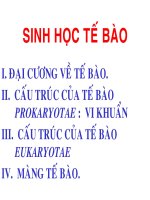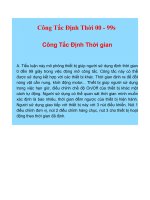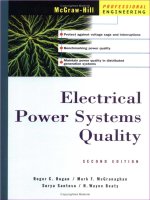C1241 00
Bạn đang xem bản rút gọn của tài liệu. Xem và tải ngay bản đầy đủ của tài liệu tại đây (14.84 KB, 2 trang )
Designation: C 1241 – 00
Standard Test Method for
Volume Shrinkage of Latex Sealants During Cure1
This standard is issued under the fixed designation C 1241; the number immediately following the designation indicates the year of
original adoption or, in the case of revision, the year of last revision. A number in parentheses indicates the year of last reapproval. A
superscript epsilon (e) indicates an editorial change since the last revision or reapproval.
dure described in Test Method D 1475.
1. Scope
1.1 This test method covers a laboratory procedure for
determining volume shrinkage, which occurs during cure, of a
latex sealant.
1.2 The values stated in SI units are to be regarded as the
standard. The values given in parentheses are provided for
information only.
1.3 This standard does not purport to address all of the
safety concerns, if any, associated with its use. It is the
responsibility of the user of this standard to establish appropriate safety and health practices and determine the applicability of regulatory limitations prior to use.
5. Significance and Use
5.1 Shrinkage of a sealant, after application in a building
joint, is caused by loss of volatile components from the sealant.
This loss results in a decrease in volume and, hence, a change
in the sealant’s shape. This change in shape, in some applications, should be taken into consideration for acceptable joint
appearance and geometry.
5.2 The shrinkage value obtained by this test method helps
predict the appearance and geometry of the cured sealant in a
building joint and is helpful in determining the amount and
type of tooling to be done during installation of the sealant.
5.3 Latex sealants cure primarily through water evaporation. They may also contain small amounts of other volatile
components. However, in this test method all volatiles are
treated as water. This assumption still provides a meaningful
shrinkage value since the small quantities of other volatiles and
their differences in density from that of water do not significantly affect the usefulness of the result obtained.
NOTE 1—A related ISO standard is ISO 10563. The user should
compare to determine how it differs from this test method.
2. Referenced Documents
2.1 ASTM Standards:
C 717 Terminology of Building Seals and Sealants2
D 1475 Test Method for Density of Paint, Varnish, Lacquer,
and Related Products3
2.2 ISO Standards:4
ISO 10563 Building Construction–Sealants–Determination
of Change in Mass and Volume
6. Apparatus
6.1 Polyethylene Film—Three sheets, each about 51 by 51
mm (2 by 2 in.) by 0.127 mm (5 mil) thick.
6.2 Weight-per-Gallon Cup, 80 to 90 mL capacity.
6.3 Constant Temperature Bath or Room, held at 23 6
2.0°C (73 6 3.6°F).
6.4 Forceps.
6.5 Distilled Water.
3. Terminology
3.1 Definitions—Refer to Terminology C 717 for definitions
of the following terms used in this test method: cure, joint,
latex sealant, sealant, shrinkage (volume), and tooling.
4. Summary of Test Method
4.1 The sealant is extruded onto polyethylene release film
and weighed. After curing for 28 days, its volume shrinkage is
calculated using the sealant’s density, the percent weight lost
during the 28-day cure, and the density of water. The density of
the sealant is determined by the weight-per-gallon cup proce-
7. Procedure
7.1 Standard conditions of temperature and relative humidity for the test shall be 23 6 2°C (73 6 3.6°F) and 50 6 5 %,
respectively.
7.2 Condition the sealant to be tested in a closed container
at standard conditions for at least 24 h.
7.3 Condition approximately 2 L of distilled water at
standard conditions for at least 24 h.
7.4 Determine the density (Ds) in grams per millilitre of
fresh sealant by Test Method D 1475. Record the average
density (Ds) of three determinations.
1
This test method is under the jurisdiction of ASTM Committee C24 on Building
Seals and Sealants and is the direct responsibility of Subcommittee C24.20 on
General Sealant Standards.
Current edition approved Jan. 10, 2000. Published March 2000. Originally
published as C 1241 – 93. Last previous edition C 1241 – 93.
2
Annual Book of ASTM Standards, Vol 04.07.
3
Annual Book of ASTM Standards, Vol 06.01.
4
Available from American National Standards Institute, 11 W. 42nd St., 13th
Floor, New York, NY 10036.
NOTE 2—It is very important that the volume of the weight-per-gallon
cup be accurately determined according to the calibration procedure
described in Test Method D 1475. Use distilled water from 7.3. Determine
Copyright © ASTM International, 100 Barr Harbor Drive, PO Box C700, West Conshohocken, PA 19428-2959, United States.
1
C 1241 – 00
the distilled water density by measuring its temperature to the nearest 1°C
at the time of cup calibration and use of Table 1.
where:
Wf = net weight of fresh sealant, g (7.7), and
Wc = net weight of sealant after 28 days cured (7.10).
¯ ¯l) of the
8.2 Calculate the average percent weight loss (% W
three sets of sealant specimens.
8.3 Calculate the percent volume shrinkage of the sealant as
follows:
7.5 Weigh each of the polyethylene sheets to the nearest
0.001 g.
7.6 Extrude a set of sealant specimens containing two beads
approximately 3 mm (1⁄8 in.) in diameter and 38 mm (11⁄2 in.)
long onto a weighed polyethylene sheet.
7.7 Immediately weigh the sheet with sealant and determine
the net weight of fresh sealant to the nearest 0.001 g.
% volume shrinkage 5
NOTE 3—Handling the sheets with bare hands will leave fingerprints,
hence, handling only with forceps is recommended.
where:
Ds
% Wl
0.9976
7.8 Prepare and weigh two more sets of sealant specimens
as in 7.6 and 7.7.
7.9 Cure the sealant specimens, while still attached to the
polyethylene, for 28 days at standard conditions. Protect the
specimens from picking up dust.
7.10 After the 28-day cure period, weigh each sheet with
sealant and determine the net weight of each set of sealant
specimens to the nearest 0.001 g.
W f 2 Wc
3 100
Wf
TABLE 1 Absolute Density of Water, g/mL
Density
15
16
17
18
19
20
21
22
23
24
25
26
27
28
29
30
0.999127
0.998971
0.998772
0.998623
0.998433
0.998231
0.998020
0.997798
0.997566
0.997324
0.997072
0.996811
0.996540
0.996260
0.995972
0.995684
= average density of fresh sealant, g/mL (7.4),
= average percent weight loss (8.2), and
= density of water at 23°C, g/mL (Table 1).
10. Precision and Bias 5
10.1 Precision—The precision of this test method is based
on the results of five laboratories testing three materials in
triplicate.
10.1.1 Repeatability—In the future use of this test method,
the difference between two test results obtained by the same
operator on the same material will be expected to exceed
0.771 % only about 5 % of the time.
10.1.2 Reproducibility—In future use of this test method,
the difference between two test results obtained by different
operators in different laboratories on the same material will be
expected to exceed 1.862 % only about 5 % of the time.
10.2 Bias—Since there is no accepted reference material
suitable for determining the bias for this test method for
volume shrinkage, bias has not been determined.
(1)
°C
(2)
9. Report
9.1 Report the following information for each sealant tested:
9.1.1 Identification of the sealant, and
9.1.2 Percent volume shrinkage as calculated in 8.3.
8. Calculation
8.1 Calculate the percent weight loss (% Wl) from each set
of specimens as follows:
% Wl 5
Ds 3 % Wl
0.9976
11. Keywords
11.1 latex sealant; sealant; shrinkage (volume); tooling
5
Supporting data have been filed at ASTM Headquarters. Request RR: C241044.
ASTM International takes no position respecting the validity of any patent rights asserted in connection with any item mentioned
in this standard. Users of this standard are expressly advised that determination of the validity of any such patent rights, and the risk
of infringement of such rights, are entirely their own responsibility.
This standard is subject to revision at any time by the responsible technical committee and must be reviewed every five years and
if not revised, either reapproved or withdrawn. Your comments are invited either for revision of this standard or for additional standards
and should be addressed to ASTM International Headquarters. Your comments will receive careful consideration at a meeting of the
responsible technical committee, which you may attend. If you feel that your comments have not received a fair hearing you should
make your views known to the ASTM Committee on Standards, at the address shown below.
This standard is copyrighted by ASTM International, 100 Barr Harbor Drive, PO Box C700, West Conshohocken, PA 19428-2959,
United States. Individual reprints (single or multiple copies) of this standard may be obtained by contacting ASTM at the above
address or at 610-832-9585 (phone), 610-832-9555 (fax), or (e-mail); or through the ASTM website
(www.astm.org).
2









